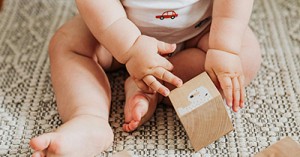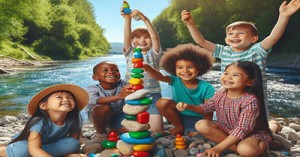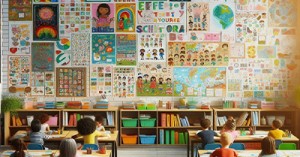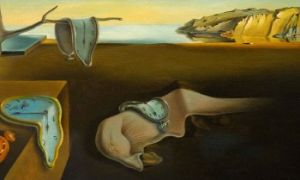Within the physical environment, Interest Areas are prepared and maintained to encourage children in their learning. These areas are well planned and are purposefully created to enable children to experiment, discover, explore and create.
What are the Interest Areas
Interest Areas are arranged areas in the environment that have specific resources, tools and equipment that children can engage in within each areas of interest. Interest areas that support learning are vibrant and ?exible and are responsive to the interests and abilities of each child. The most common interest areas that are used within the physical environment include the following:
The most common interest areas that are used within the physical environment include the following:
- Art and Craft
- Block Play
- Construction Area
- Computer Area
- Cooking Area
- Home Corner
- Library Area
- Music and Movement
- Outdoor Area
- Puzzle Play
- Sand and Water Area
- Science and Nature
- Sensory Play
- Toy Table
Setting up Interest Areas
Interest Areas need to be adaptable, welcoming and organized. Children should be able to make choices and have easy access to materials.
Furniture and materials are arranged to create well defined areas of interest, rather than in a single large space. Materials, items and resources are provided in each specific interest area to reflect children’s natural curiosity and to encourage purposeful play and learning. This encourages different types of play and enables children to see the experiences on offer.
Each area needs to have their own defined space. Quiet areas should be separated from noisy ones. Block Play, Construction and Home Corner are all considered “noisy” so these areas can be set up in one part of the room. Library Area, Puzzle Play and Computer Area are quieter and can be established away from the noisier ones. Messy play, small or large group activities and individual activities should also be considered when setting up and depending upon the types of experiences the children will engage in (small group, large group or individual), space will need to be made available.
Safety is also a main priority. All children should be easily visible within each of the interest areas. Furniture should be sturdy and materials free from hazards. Children need to be guided and taught how to use equipment properly to stop accidents. Furniture, materials and resources will need to be kept clean and hygienic so it’s a good idea to clean these at least once a week or more to avoid spread of germs.
It is important that children feel that the learning environment is an exciting and interesting place where they can try new things and feel free to explore ideas and interests.
How to Use Interest Areas
After setting up each interest area within the physical environment, the main experience added to each area needs to be reflected within the curriculum plan. The experiences planned on the curriculum plan need to be added to an interest area based on what type of experience it is. For example; in the weekly curriculum plan if one of the experiences planned is “Tapping Boards” this can be arranged on the Toy Table, “Animal Puppets” can go in Library Area; “Life Cycles” will be set up in “Science and Nature” etc.
When adding to interest areas it’s a good idea to have a selection of materials that can be used to extend on children’s learning. They do not necessarily have to be added onto the curriculum plan if the materials being used are the same over duration of time. So, within the interest area Block Play, along with the main experience you can also add animal/people figurines, builder’s helmets and signs. Even though these materials may be the same week in and week out, change them on a rotating basis in order to add variety and more options for the children to choose from and to extend on children’s interests and ideas.
Interest areas should be flexible and open ended and organized to promote small group interactions and play experiences.
Benefits of each Interest Area
- Art and Craft - Engaging in Art n Craft experiences benefits all aspects of children's development. Children, who cannot express what they feel and think and how they view their world in words, may be able to do so more readily through art.
- Block Play - Blocks are open-ended play materials; there is no right or wrong way to build with them. Sometimes children start with an idea of what they want to make, at other times, the three dimensional design grows as children place blocks together randomly or in patterns. The creations built in blocks are often reminiscent of things they have seen, and so they will begin to name what they build: a house, road or railway train.
- Construction Area – Construction involves children building and making things no one has seen before. Children are offered a variety of materials and begin to sort, arrange and construct using their ideas and imagination. Through construction it provides children an opportunity to invent and discover new possibilities.
- Computer Area - Children, who have access to a computer and are encouraged in computer play, discover open ended play that are both rewarding and enriching. The computer area should allow children to learn in a variety of ways, at a pace that meets their individual needs.
- Cooking Area – Cooking experiences teach children how food is prepared and cooked and how it contributes to their health and well-being. Children enjoy cooking experiences as it is one of the few activities which allow them to do exactly the same thing that adults do.
- Home Corner - Pretend play is very important for children's development and learning. In the house corner children can take on and try out roles from familiar family scenes, local community's experiences and imaginative fantasies.
- Library Area - A library is an essential part of a early childcare setting. It provides children with an opportunity to listen to stories and poems, explore books and a variety of reading materials. The library area can include: a writing centre and listening area with story tapes for the children to listen to, felt boards and puppets.
- Music and Movement - Children begin to learn that music and movement communicate messages and represents actions. Most children start learning about their world by acting on objects and people and begin thinking with their bodies before using words. By using movement children aren't limited by their verbal abilities.
- Outdoor Area - Outdoor play is enjoyable for children and important for their growth and development. When outdoors children are able to run, skip, jump, climb, throw, hop and catch and use their outside voices, which provides a healthy break from being inside. Being outside gives children the opportunity to stretch their muscles, breathe fresh air and enjoy the freedom of space.
- Puzzle Play – When a child completes a puzzle they are acquiring many skills without even realizing it. Puzzles enable a child to develop problem solving skills on how to place a piece in correct space, cognitive skills through visual space awareness, fine motor skills to learn how to grasp and pick up pieces through manipulation, hand/ eye co-ordination by placing puzzle pieces in correct order and social skills by completing puzzles with peers.
- Sand and Water Area - The natural attraction that children have with these mediums makes them perfect for exploring in the childcare room. Sand and water play can be two separate activities or formed into one. Sand and water each provides children with many learning experiences. While playing with sand, it provides children with options to shape, rake, shovel or build with the sand. Water gives the children options of splashing, pouring and mixing.
- Science and Nature – Science and Nature enables children to learn about facts and the world around them. Through first hand experiences science and nature provides children to be engaged through investigating and exploring which will support to develop their ideas and learning.
- Sensory Play – Sensory experiences enable children to use their senses to explore and manipulate objects. Through touch, smell, hear, seeing and tasting it contributes to a child’s overall learning. When exploring through sensory play children will also begin to classify objects based on different textures, which is an important part of learning.
- Toy Table - Toy tables are games, manipulative projects, puzzles and collectibles that children can play with at the table or on the floor. These are quiet activities the children can do alone, with a friend or a teacher. They offer children challenging opportunities to learn new skills.
Strategies to Maintain Interest Areas
Interest areas are designed to support decision making, independence and responsibility. Children are given opportunities to practice these skills by selecting and using materials, equipment and tools offered in each area. To ensure the children are achieving individual and group learning outcomes in each interest area, the following strategies are suggested:
- For each area, plan the best number of children to comfortably work in the space provided. To help children understand have a “number of children board” visible within each area. Children can choose their name from a selection of name cards or a photo card and stick it on the board. This enables children to see if they area is full or space is available to play at the interest area.
- Create areas that can serve more than one purpose at different times of the day. Toy table can be also used as the Cooking Area or the Library Area can be used during group time.
- Not all interest areas need to be used in the one environment. Sometimes centres only have a small amount of space to work with and getting all the interest areas organized into a small space isn’t going to work. Divide the areas between the indoor and outdoor environment.
- Use posters or picture cards to inspire creativity. In Block Play add pictures of buildings, in Science and Nature add posters of life cycles, in Art and Craft add pictures of famous artist’s paintings such as Picasso or Da Vinci. Think about the children’s interests or their experiences within the learning areas and add photos or posters to represent their ideas.
- For storage, take photos of resources and items in each interest area and stick them onto their relevant basket or container. This encourages the children to pack away and put the activity back in the proper place.
- Set materials and resources up in an inviting and interesting manner. Take care in how you set up each experience. For example, in Block Corner there is no point just dumping blocks in the middle of the mat. Use some creativity to make it inviting by making a design or building small towers that the children can extend upon.
Materials Needed For Interest Areas
Material selection and arrangement strongly influence and supports children’s learning. Here is a list of recommended materials for each Interest Area:
Art and Craft
- Clay, play dough & tools
- Easels
- Scissors, paste & glue
- Finger paints, tempera paints & brushes
- Crayons, water colours, markers, chalk
- Yarn, ribbon, string
- Colour construction paper
- Collage materials
- Colour tissue & crepe paper
- Smocks, drying rack
Block Play
- Wooden unit blocks
- Signs
- Large, hollow wooden blocks
- Planks
- Rug
- Block play props: vehicles, toy animals, people and furniture
- Construction Area
- Planks
- Rug
- Large empty boxes
- Carpet pieces (various sizes)
- Wheel toys for riding
- Steering wheel
- Lego
- Duplo
Computer Area
- Computers
- Egg timer
Cooking Area
- Electric hotplate, toaster oven
- Electric frying pan
- Measuring cups & spoons
- Bowls, utensils, pots & pans
- Recipes
- Mixer
- Refrigerator
Home Corner
- Opened-ended furniture
- Multiethnic dolls and clothes
- Kitchen appliances: wooden stove, sink, refrigerator and cupboard
- Table and chairs
- Broom, dust pan, ironing board and cleaning equipment
- Telephone, pots and pans, clock, food containers, dishes, and silverware
- Doll bed, blankets and pillow
- Dress-up clothes and uniforms
- Calculator
- Occupational props: fire hoses, doctor's kit, cash register and play money
- Typewriter
- Doll house and accessories
- Full-length mirror
- Real props, such as menus, ordering pad, clip board
- Scarves
Library Area
- Fiction & nonfiction books
- Books on tape
- Books made by children
- Chairs, rocking chair, rug, pillows
- Book racks, shelves
- Magazines, newspaper, catalogues
Music and Movement
- Rhythm & musical instruments
- Autoharp &/or piano
- Records &/or tapes
- Scarves & other dance props
- CD player and selection of cd's
Outdoor Area
- Balance beam (low)
- Rocking boats
- Climbing structures
- Slide
- Stairs
- Wheel toys, pedal toys, wagons, ride-on
- Parachute
- Games: ring toss, bean bags, bowling
- A variety of balls
- Jump ropes
- Hula hoops
Puzzle Play
- Variety of Puzzles
Sand and Water Area
- Sifters, funnels
- Shovels, pails
- Eye droppers
- Rakes, moulds
- Food colouring
- Measuring cups
- Water wheel
- Rice, beans, other materials to sift & pour
- Garden tools
- Bottles
- Plastic tubing
- Trays
- Pitchers
Science and Nature
- Simple machines: pulleys, gears, inclined plane,
- Magnets
- Collections of rocks, shells, nests, insects, etc.
- Batteries, wires, bells, flashlight bulbs
- Animal environments and animals
- Thermometers
- Globe
- Old appliances, tools, paper, writing materials, clipboard
- Plants
Sensory Play
- Shaving Cream
- Bird Seed
- Coloured Rice
- Beans
- Oatmeal
- Shredded Newspaper
- Dirt
- Other materials to accommodate theme
Toy Table
- Sorting Items based on size, colour etc.
- Threading cards
- Tapping boards
- Pattern blocks
- Shape Cards
- Magnetic Letters and Numbers
- Manipulation Activities
- Board Games
Interest areas offer a learning environment that is challenging, stimulating and interesting will allow the children to engage in the experiences that you offer. Interest Areas will enable you to observe and interact with the children in a positive way and support the development of children’s play based learning. Just remember - "The Possibilities Are Endless".







 As an Educator in Australia, your pay rate falls under the Children’s Services Award 2010. This award states the minimum amount that an employer can
As an Educator in Australia, your pay rate falls under the Children’s Services Award 2010. This award states the minimum amount that an employer can When working as a qualified Early Childhood Teacher (with a university degree) within a service, your rate of pay will come from the Educational Services
When working as a qualified Early Childhood Teacher (with a university degree) within a service, your rate of pay will come from the Educational Services When working as a Diploma Qualified Educator your pay rate is from the Children's Services Award 2010. This Award states your minimum rate of pay
When working as a Diploma Qualified Educator your pay rate is from the Children's Services Award 2010. This Award states your minimum rate of pay When working as a Cert 3 Qualified Educator, your pay rate is from the Children's Services Award 2010. This Award states your minimum rate of
When working as a Cert 3 Qualified Educator, your pay rate is from the Children's Services Award 2010. This Award states your minimum rate of Educational Leaders play a crucial role in their early childhood service by ensuring that the educational program aligns with best practices and supports the holistic
Educational Leaders play a crucial role in their early childhood service by ensuring that the educational program aligns with best practices and supports the holistic In early childhood education and care, ratios are more than a technicality—they are a frontline safeguard. Every child deserves responsive supervision, emotional connection, and developmental
In early childhood education and care, ratios are more than a technicality—they are a frontline safeguard. Every child deserves responsive supervision, emotional connection, and developmental Here’s a comprehensive Mobile Phone and Smart Watch Policy tailored for early childhood education and care (ECEC) services in Australia, aligned with the latest 2025
Here’s a comprehensive Mobile Phone and Smart Watch Policy tailored for early childhood education and care (ECEC) services in Australia, aligned with the latest 2025 With the new national child safety reforms kicking in on 1 September 2025, early childhood services like yours have a real opportunity to lead the
With the new national child safety reforms kicking in on 1 September 2025, early childhood services like yours have a real opportunity to lead the The Sea of Fish Challenge is a national initiative that invites children, educators, families, and communities to create and display fish artworks as a symbol
The Sea of Fish Challenge is a national initiative that invites children, educators, families, and communities to create and display fish artworks as a symbol Across the early childhood education and care sector, educators are sounding the alarm: current staffing ratios are insufficient to deliver safe, meaningful, and developmentally appropriate
Across the early childhood education and care sector, educators are sounding the alarm: current staffing ratios are insufficient to deliver safe, meaningful, and developmentally appropriate


